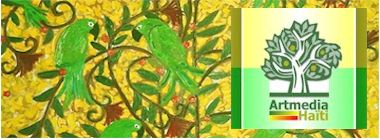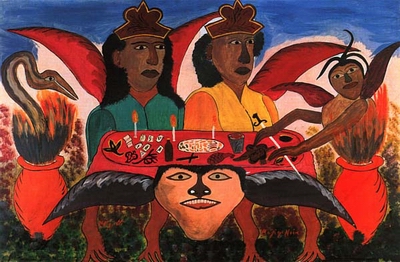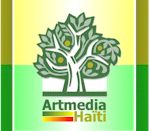
|
|
|
| � | |

|
Artists |
|
-�All Artists -�Early & Historical Masters -�Contemporary Masters -�Contemporary Moderns -�Contemporary Primitives -�Decorative Artists -�Private Collections |
|

|
Themes & Subjects |
|
-�Daily Life -�People & Portraits -�Nature -�Landscapes -�Religion & Mythology -�Danse & Music -�History |
|

|
Genres & Schools |
|
-�Abstract -�Artistes du Centre d�Art -�L�Ecole de l'Artibonite -�L�Ecole du Cap-Haitien -�L�Ecole de la Beaut� -�Saint Soleil |
|

|
Medium & Materials |
|
-�Oils -�Acrylics -�Watercolors -�Drawings -�Photography -�Scuplture -�Handicrafts |
|

|
Documents |
|
-�Biographies & Profiles -�Articles & Commentary -�Testimonials & Tributes -�Books & Essays -�Videos & Films -�Tapes & Cds -�The AMH Online Journal -�The Visitor�s Canvas -�Resources -�Haiti Links -�Art Links |
|
| � |
| --> Category: History & Culture - American Museum of Natural History� |
| � |

|
| � |
| The first act of the revolution, according to Haitian tradition, was a Vodou ceremony held by runaway slaves in 1791. After 13 years of fighting, the rebels drove out the French. |
| � |
|
Haitian Vodou was born in the seventeenth century, when enslaved Africans brought to the Americas several religious traditions from West and Central Africa, and were in turn exposed to a variety of European traditions, including the art and ritual practices of Roman Catholocism. Vodou, still evolving through its practice in Haiti and North America, thus represents the fusion of several different belief systems into an original religion. Haitian history is a favorite subject for Haitian artists. The paintings in this section depict watershed moments from Haiti's turbulent past. When Christopher Columbus 'discovered' the island of Hispaniola in 1492, it was inhabited by the Taino (Arawak) Indians. Within a generation the Taino were nearly exterminated by Spanish colonizers, who then began importing slaves from West and Central Africa. In 1697 the French acquired the western third of the island, and for the next century African labor made it the most prosperous colony in all the world. The prime source of wealth was sugar; coffee, cotton and indigo brought riches as well. In the course of a century, the slave population swelled from a few thousand to nearly half a million. Several hundred thousand more were worked to death. Acts of rebellion grew frequent. The island was ruled by the whip. The first act of the revolution, according to Haitian tradition, was a Vodou ceremony held by runaway slaves in 1791. After 13 years of fighting, the rebels drove out the French. In 1804, Haiti became the first nation after the USA to gain independence in the Americas. It was the only slave revolt in the world ever to create a nation. Haitian Culture & History by the American Museum of Natural History Central Park West at 79th Street New York, NY 10024-5192 USA Phone: (212) 769-5606 Fax: (212) 769-5427 Sacred Arts of Haitian Vodou [email protected] |
| � |
|
|
||
 Designed and Maintained by InterMedia, The Internet Communications Network of Haiti�  ArtMediaHa�ti Suite 200 - Angles des Rues Gr�goire et Chavannes P.O. Box 16042 - P�tionville, Haiti Telephone: (509) 511-1314, 557-5290, 403-1130, 401-1626 - Fax: (626) 608-3594 http://www.artmediahaiti.com [email protected] |
||
| Service | Contact | Cart-Panier | Home-Accueil | ||
| � | ||
| � All Rights Reserved-Copyright�2001-2002 by ArtMedia Haiti-Port-au-Prince, Haiti | ||